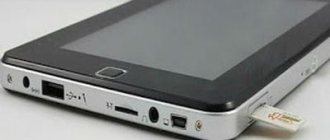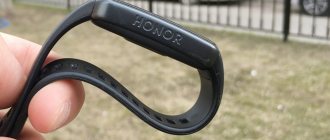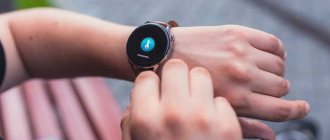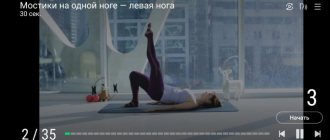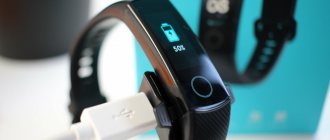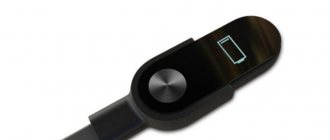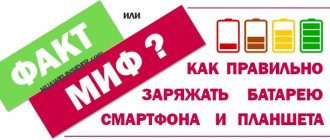01.03.2021
Oxygen is involved in the formation of 90% of the energy produced by the body. It is necessary for the chemical reactions of breaking down food molecules and releasing energy from them for the functioning of all organs and systems of our body. Saturation is an indicator that determines the level of oxygen saturation in the blood. The normal level of oxygen saturation in the blood in adults is 94-99%. If the value drops below, the person experiences symptoms of hypoxia, or oxygen deficiency. In this article we will look at how to determine the level of oxygen saturation and what doctors do when the levels are critically low.
Saturation is measured as a percentage. They mean the ratio of the number of hemoglobin molecules to the total number of molecules in combination with oxygen. There are two measurement methods:
- SaO2 is a reference to true oxygen saturation, which is measured by arterial blood test.
- SpO2 is the saturation measured using a non-invasive method such as a pulse oximeter.
How is saturation measured?
The level of oxygen in the blood is one of the key indicators in diagnostics around the world. Saturation is easy and quick to measure: the procedure takes from 10 seconds to a minute, and inexpensive and compact pulse oximeters are used for this. A decrease in blood oxygen levels may indicate:
- respiratory diseases (pneumonia, pneumonia, tuberculosis, bronchitis, lung cancer, etc.);
- violations of the quantitative composition of the blood (lack of red blood cells or hemoglobin);
- heart defects (coronary heart disease, congenital defects, infectious valve damage, etc.).
Other causes of low blood oxygen saturation in adults include excess weight and smoking.
What is an SpO2 sensor and do you need one?
Fitness trackers can track some pretty strange and interesting metrics. But how to interpret the results and what do they mean? SpO2 is just one example of a little-understood metric that can provide insight into your health.
In the new Mi Smart Band 6, Xiaomi has integrated a blood oxygen level (SpO2) sensor. In this article, we will look at how to correctly analyze measurement results, what levels of oxygen in the blood correspond to the norm, and many other aspects of this topic.
What is an SpO2 sensor?
SpO2 is a measure of oxygen saturation in the blood. The more oxygen in the blood, the higher the SpO2 level will be. The body needs oxygen to survive, so higher SpO2 levels correspond to good health. In contrast, low blood oxygen levels can lead to symptoms known as hypoxemia. The normal SpO2 value is 95% to 99%.
The logical question is, how accurate are oxygen levels in wearable devices? And what to do with this information?
SpO2 shows the percentage of hemoglobin in the blood. Hemoglobin is the “red blood cell” that contains oxygen and carries it throughout the body. The body replenishes oxygen reserves naturally through regular breathing. In other words, oxygen enters through the mouth and nose and then passes through the microscopic air sacs and blood vessels in the lungs (called alveoli and capillaries) into the bloodstream.
With intense physical activity (running, lifting weights), the need for oxygen increases. As a result, breathing and heart rate increase to meet the increased demands of the body.
How do fitness trackers measure SpO2?
Fitness trackers, smart watches and other devices called pulse oximeters can measure SpO2 levels. They work in the same way as heart rate monitors worn on the wrist: light of a specific wavelength (usually infrared) is passed through the skin. A highly sensitive photodetector allows the device to “see” the hemoglobin in your blood vessels.
The main difference between a SpO2 fitness tracker and a pulse oximeter is that the pulse oximeter is placed on the tip of your finger. This is an ideal place to take readings, so such devices will be more accurate.
Various factors affect the accuracy of the readings, such as skin color, ambient light, and hand movements. Fitness trackers can try to combat distortions in the results of movements using a software method - using algorithms that take into account data from the accelerometer or gyroscope. These software adjustments allow for a higher degree of accuracy.
Most manufacturers are careful to specify that their devices should not be used for medical diagnostics. Few wearable devices are certified as medical devices to measure SpO2.
To get the most accurate readings, use a black strap or wear a long sleeve over the tracker.
Why is it necessary to monitor the level of oxygen in the blood?
So, why is it important to monitor your blood oxygen levels?
In fact, not everyone needs this data. SpO2 data will be useful for two categories of people:
- Athletes whose training requires careful monitoring of SpO2. These could be divers or climbers training at high altitudes.
- People with chronic diseases that affect breathing.
The third category could be:
- Biohackers and those interested in various breathing experiments, such as the Wim Hof method
Sleep apnea
SpO2 may be a useful indicator of sleep apnea. Sleep apnea is a condition in which a person wakes up periodically during the night due to difficulty breathing. There are two types of sleep apnea: obstructive apnea, which occurs due to narrowing of the upper airways, and central apnea, which occurs due to disruption of the central mechanisms regulating breathing. With apnea, a person wakes up at night to gasp for air and is often unaware of what is happening. As a result, people often wake up, and during the day they feel tired and overwhelmed, lose concentration and do not even understand what the problem might be.
A device that measures SpO2 can alert you to this problem so you can take action. It is important that a fitness tracker monitors your blood oxygen levels at night. Typically, overnight SpO2 monitoring will significantly reduce the battery life of a wearable device. In any case, if you suspect you have a similar problem, it is better to consult a specialist.
SpO2 and COVID-19
The connection between blood oxygen levels and COVID-19 has caused some confusion. Some medical organizations use pulse oximeters to diagnose coronavirus, but not everything is so clear.
COVID-19 is a disease that affects the lungs, meaning difficulty breathing can be an indicator of the virus. Measuring the level of oxygen saturation in the blood over time allows you to assess how the body copes with the virus. Portable SpO2 measurements can provide a useful early warning signal for complications such as pneumonia.
It is important to remember that SpO2 sensors in fitness trackers and pulse oximeters are not very accurate and may give false readings. Moreover, this is just one of many symptoms associated with COVID-19. Many other conditions can cause difficulty breathing.
Training at high altitude
During physical activity at altitude, it becomes more difficult to extract oxygen from the air. Oxygen levels at sea level are usually around 21%, but above 3000m they can drop to 15%.
Training at altitude can cause an athlete to adapt to the lack of oxygen in order to use oxygen as efficiently as possible. After a few weeks of this type of training, the body begins to produce more red blood cells and the way these red blood cells retain oxygen changes. Until these changes occur, the athlete will feel sluggish because less oxygen is reaching the muscles. The SpO2 sensor will help a person exercise safely and clearly see the benefits of this workout.
Note that altitude masks do not actually simulate training at altitude and do not cause the same adaptations. However, they can provide other beneficial benefits, such as strengthening the intercostal muscles.
Breathing techniques
Biohackers use various breathing techniques to alter their physiological parameters. The most famous technique is the Wim Hof Method, which can strengthen the immune system, increase energy levels and much more.
This technique involves a series of deep breaths followed by very shallow exhalations. After 30 cycles, you take one last deep breath and exhale slowly. Finally, you hold your breath for another 15-20 seconds.
At the same time, the blood is saturated with oxygen and the level of carbon dioxide sharply decreases. By lowering carbon dioxide levels and blood pH levels, you prevent the body from using stored oxygen. Hyperventilation can lead to fainting. The Wim Hof Method provides a clear demonstration of the complexity of SpO2 and the body as a whole.
Do you need to monitor SpO2?
We have covered the main aspects related to SpO2. For most users, this feature will be useful for tracking sleep and perhaps getting a little insight into how our bodies cope with exercise. This indicator will be of particular relevance for biohackers and athletes who train in high mountains.
How do pulse oximeters work?
To determine whether oxygen saturation in the blood is normal, a test device similar to a clothespin is used. The pulse oximeter is attached to your finger, after which the device passes a beam of light through it. There are light-emitting diodes at one end of the device and meters at the other. Due to the ability of hemoglobin to absorb light, blood saturated with oxygen has a different color. The photodetector records the measurements and instantly displays them on the screen. You can make sure that an adult’s oxygen saturation level is normal using the latest versions of fitness bracelets and smart watches: they take measurements in a similar way, but are less accurate.
To get reliable readings, you need to sit down and relax. The pulse oximeter sensor should be located at the base of the nail. You cannot move your hand while determining saturation. A sound signal indicates that the device has completed diagnostics. In order for the diagnosis to be as accurate as possible at a critical moment, it is advisable to know your oxygen saturation rate - for example, take measurements at different times of the day: immediately after sleep, after eating, during work, etc.
Why is monitoring SpO2 important?
With constant physical training, an active lifestyle and daily stress, the amount of O2 in the blood decreases. This can be noticed during excessive physical exertion, when a person experiences shortness of breath and difficulty breathing. To restore the body, you need to replenish oxygen reserves. The option will allow you to detect O2 levels and prevent deterioration in your health. The bracelet is constantly on the hand and has ultra-sensitive sensors. It checks the values every minute and displays accurate results on the screen. The watch is securely attached to the wrist without creating discomfort.
Optimal oxygen saturation indicators
There is an average rate of oxygen saturation in adults when measured with a pulse oximeter. The average values are shown in the table:
| Patient's condition | Indicators |
| Normal oxygen saturation in an adult | More than 95% |
| Respiratory failure 1st degree | 90-94 % |
| Respiratory failure 2nd degree | 75-89 % |
| Respiratory failure 3rd degree | Less than 75% |
| Hypoxemic coma | Less than 60% |
It is important to note that the situation will be different for newborn children. Infants have poorly developed lungs and little iron in the body, so oxygen saturation of 98% and below, down to 92%, is considered normal. In premature babies, saturation can drop to 82%: in this case, artificial ventilation is used.
The table is normal
The table below shows normal saturation levels for adults and children, and also indicates the degree of oxygen saturation in the blood, which indicate an unsatisfactory state of the respiratory system.
| Blood saturation level | Physiological state of a person |
| 95 to 98% | This level of blood saturation is an indicator of normality. Similar diagnostic results for the patient confirm the satisfactory condition of his bronchopulmonary tissue and the good binding of hemoglobin to oxygen molecules. In this case, there are no signs of pathological changes in the structure of bronchopulmonary tissue. |
| Within 94% | A decrease in saturation level to 94% indicates that a person has an acute or chronic disease of the body that disrupts the process of saturating the blood with a sufficient volume of oxygen. Patients with such examination results are referred for additional studies using laboratory and instrumental diagnostic methods. |
| About 92% and lower rates | A similar level of blood saturation indicates a critical condition of the patient. People with these diagnostic results experience acute symptoms of oxygen deprivation and also require urgent hospitalization in a hospital pulmonology department. Without emergency saturation of the blood with a sufficient volume of oxygen, death may occur. |
In medical practice, there are periodically cases when people with a saturation level of 89% do not feel sick. Most often these are heavy smokers who have signs of bronchial obstruction. Over the course of many years of smoking, the body of such people has adapted to stress loads caused by oxygen deprivation.
What to do if oxygen saturation is low
The causes of low oxygen saturation are not always associated with any diseases. For example, the indicator can drop to 92-94% during intense sports, when there is simply not enough oxygen due to high loads.
In addition to low saturation, hypoxemia can manifest itself as increased heart rate and breathing, drowsiness, pale skin, decreased blood pressure, weakness and dizziness. A person may notice an increased level of anxiety and insomnia. If hypoxemia worsens, then anaerobic processes begin in the cells, accompanied by the release of large amounts of harmful substances. Shortness of breath, respiratory failure, tachycardia, swelling of the lower extremities, fainting, tremor, and bluish skin appear.
If the reasons for the decrease in oxygen saturation are known, then first of all doctors work to treat this condition. For minor hypoxia, oxygen canisters are used: they allow you to quickly saturate the blood with oxygen and immediately improve your well-being, but do not in any way affect the root cause of oxygen deficiency. As a rule, such therapy is used if the deficiency is caused by high physical activity, chronic diseases of the bronchi and lungs, and recovery from infectious diseases.
If oxygen saturation levels drop to 94%, this is a reason to consult a doctor. However, doctors will make treatment decisions based on other symptoms. For example, for mild cases of COVID-19, pulmonologists will recommend home treatment using oxygen tanks and placing the patient on the stomach in a prone position to relieve symptoms of hypoxemia. However, if the saturation is below 95% and at the same time the patient has a high temperature, shortness of breath, wheezing, he requires hospitalization and, possibly, oxygen therapy.
SpO2 normal for adults and adolescents
SpO2 norms for an adult or teenager:
- The saturation level in a healthy person is 95%–99%.
- Range from 90 to 94% - there is slight hypoxia or lack of oxygen.
- From 86 to 90% is an average lack of oxygen.
- All other values (less than 85%) indicate severe hypoxia, which requires emergency medical care.
Comparison of Honor Band 5 vs Xiaomi MI Band 4: differences, pros, cons, which is better to choose?
To prevent the body from experiencing stress and oxygen deficiency, when playing sports, the saturation indicator should not fall below 92 percent.
What level of oxygen saturation in the blood is critical?
Because low oxygen saturation can be caused by a variety of diseases, there is no uniform requirement for when oxygen therapy should be started. Doctors assess the patient's condition, and if they see a medical need, they help him with medications or oxygen therapy.
At what saturation is oxygen given? The correct answer depends on the exact reason for its deficiency. Let's look at the recommendations of experts for the treatment of patients with coronavirus.
| Saturation level | Measures taken by the doctor |
| Below 92% | The patient receives oxygen using an oxygen concentrator. Masks or nasal catheters/cannulas are used to supply the gas mixture. |
| Below 85% | The patient is taken to intensive care. Non-invasive or invasive ventilation is used. |
| Below 80% | The patient is connected to a ventilator. If problems arise with mechanical breathing, the patient may be put into an artificial coma. |
It is important to note that in life-threatening conditions, saturation is not the main criterion when deciding whether to connect a patient to mechanical ventilation. Much more important are the indicators of gas exchange in the blood, the degree of lung damage, etc.
Alternative methods for bringing oxygen saturation levels back to normal
The main method of therapy for hypoxemia is oxygen support. However, there are also auxiliary ways to help the body.
Medications
They are usually used to increase hemoglobin and general strengthening. Antihypoxants that normalize redox processes in tissues, anticoagulants that prevent the formation of blood clots, drugs to lower blood pressure (prevent pulmonary edema), and infusion therapy to improve blood flow may be useful for treatment. How general strengthening agents are used:
- preparations with iron;
- preparations with magnesium;
- folic acid;
- cyanocobalimin;
- B vitamins;
- ascorbic acid;
- vitamin complexes.
Breathing exercises
In order for saturation to return to normal and blood saturation with oxygen to occur without pathologies, doctors recommend doing breathing exercises. It will be useful after any severe respiratory illness. It can be used when the patient does not have shortness of breath and the temperature has subsided. The main purpose is to stimulate blood circulation, increase the elasticity of lung tissue and strengthen the respiratory muscles. You need to exercise, gradually increasing the duration of exercises from 5 to 15 minutes. Pulmonologists recommend the following exercises:
- Lying on your back, inhale through your nose for three counts, then make a long exit for five counts.
- We sit down on a chair and lower our hands. As you inhale, raise your straight arms above your head, palms up, and as you exhale, slowly lower them.
- We stand with our arms bent at the elbows, hands on our shoulders. As you inhale, spread your arms out to the sides for three counts, then slowly exhale through your mouth, pursing your lips into a tube. At the same time, we place the hands behind the shoulders.
What to do with low saturation
At critical levels, life-sustaining drugs and equipment should be used. This is done by the medical staff.
If it is low, it is recommended to do the following:
- breathe fresh and clean air, do breathing exercises;
- drink water in small sips and take blood thinning medications (as prescribed by your doctor);
- consume foods high in iron (buckwheat, meat, apples).
Regular breathing training, combined with physical exercise, will strengthen the body and make it easier to endure any disease due to the improved function of oxygen supply to all tissues in need.
Natural ways to oxygenate your blood
There are general recommendations that will be useful not only for people with low saturation, but also for healthy people. It is necessary to ventilate the premises well, regularly go for walks, preferably in the forest, where the oxygen content in the air is higher than in the city.
A good alternative for patients who are unable to walk due to weakness, old age or distance from green areas is the use of oxygen cylinders. Prana products contain a mixture with an oxygen content 4 times higher than in the atmosphere. This gas does not dry out the airways, saturates the blood with oxygen in a matter of seconds and improves the patient’s well-being.
How does oxygen get into cells?
Blood contains 40% cells and 60% fluid. Some of these cells contain red blood cells and hemoglobin. They help transport oxygen throughout the body and deliver it to tissues. With one breath, a person receives a certain amount of oxygen. At the same time, carbon dioxide is released from the lungs. This way oxygen circulates in the body. The program tracks indicators and monitors the health of the bracelet owner. If hemoglobin falls and a person's condition worsens, fainting is possible. To prevent situations from becoming critical, constantly check the data in the tracker.
Setting up the Honor and Huawei desktop
